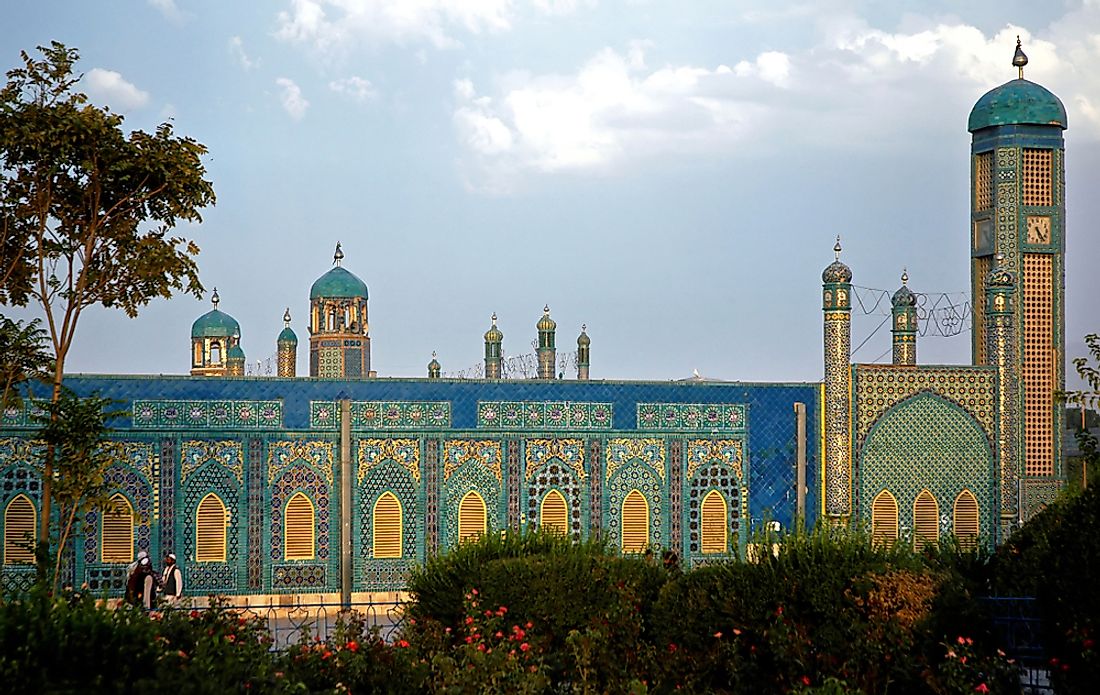The Largest Religions in Afghanistan

Islam is the state religion, and Sunni Islam is the dominant religion in Afghanistan. The political rule in the nation is mainly driven by a fundamentalist regime, which seeks to uphold Orthodox Islamist ideals. The Afghani constitution which was promulgated in 2004 states that the country will be an Islamic Republic and the sacred religion of Islam will be the religion of the Islamic Republic of Afghanistan. However, other religions are free to exercise their faiths within the bounds of the law. It further states that no other law shall contravene the tenets and provisions of the Islam religion in the country.
5. Religious Practices in Ancient Afghanistan
Archaeologists portend that humans were living in what is present day Afghanistan as early as around 50,000 years ago. The Indus civilization which covered much of the present Afghanistan was inhabited by the Iranic tribes who were ruled by the Medes until 500 BC. In 300 BC Alexander the Great conquered the region, and over the next two millenniums the area was occupied by different tribes and ruled by various kingdoms until the 7th Century when Islam was introduced. Before the Arabs conquered Afghanistan, the region had been subject to other occupations, which influenced the inhabitant’s religions. Such religions were Buddhism, Hinduism, Zoroastrianism, Pagan worship, and Surya worship
4. Introduction and Spread of Islam in Afghanistan
Islam was introduced into modern day Afghanistan starting in the 7th Century through Arab conquests in the region. By 720 AD, inhabitants of Afghanistan were converting to Islam in large numbers. The conversion was further facilitated by Islamic enthusiasts, who declared war on non-believers of Islam. Muslim missionaries also influenced scores of conversions. By the 10th Century, Islam had become dominant in Afghanistan. The Arab language became widely spoken, education in such disciplines as philosophy, mathematics, and medicine thrived and Arab architecture was adopted.
3. Influence of Westernization and Marxism: 1838-1992
Before the British occupation of Afghanistan, the nation was ruled by the Barakzai clan, under the leadership of Dost Mohammad Khan from 1826 onward. Three wars ensued between Afghans and the British, which culminated in Afghanistan’s independence in 1919. Attempts of westernization in Afghanistan were facilitated by the Emir and King Amanullah in the 19th Century, who were influenced by socialist ideals. Dress code rules for women were relaxed during his reign, and the burqa was made an optional wear. Schools for both boys and girls were also established. Amanullah stripped religious leaders of most of their powers and increased foreign trade. He established a modern military complete with western armaments. He also declared Afghanistan a secular nation and adopted a new constitution that guaranteed civil rights. Amanullah also reduced the power of the tribal aristocracy and reformed the tax system in Afghanistan. His reforms were met by resistance by Orthodox Muslims, and he was subsequently exiled.
Socialist ideals had taken root in Afghanistan even after Amanullah’s exile, and the Communist People’s Democratic Party of Afghanistan was formed. Communists, who observed Marxism, rose to political power as strong alliances with the Soviet Union were cemented starting in 1950.
Communism reached its maximum power in the country in 1978 when Noor Muhammad Taraki became President and declared Afghanistan a socialist state. Taraki embarked on the quest to give more freedom to women, raise education levels and reform land policies. He was eventually executed by Islamic puritans, who were greatly opposed to his modernization programs. The Soviet Union subsequently invaded Afghanistan and the fundamentalist Muslims finally latter gained control of Afghanistan in 1992.
2. Sunni Muslim Dominance in Modern Afghanistan
Islam is the official state religion in present day Afghanistan. Political power is mostly exercised by Muslim religious leaders, followers of the fundamentalist movement. Laws in the country are based on Sharia Law and are enforced strictly on all citizens since the law does not provide for legal recourse for non-Muslims. Islam dominates the social life of Afghans, as they observe Islamic religious practices such as prayers and holidays. The majority of the Muslims are Sunni adherents.
1. Religious Minorities in Afghanistan Today
Among the overwhelming numbers of Muslims in Afghanistan, small communities practicing other religions do still exist. These communities are Sikhs, Hindus, Christians, Jews, and Baha'i. These communities have small numbers of followers, who continue to decrease over the years due to emigration out of the country. Comprehensive statistics of religious minorities in Afghanistan have largely been unavailable because a substantial number of them practice their religions in secret.











